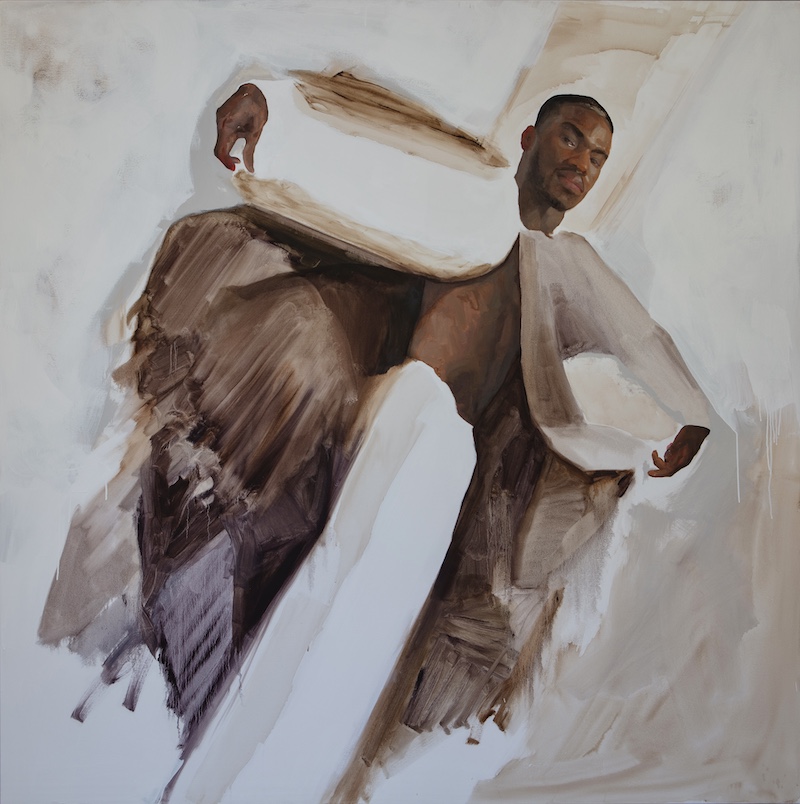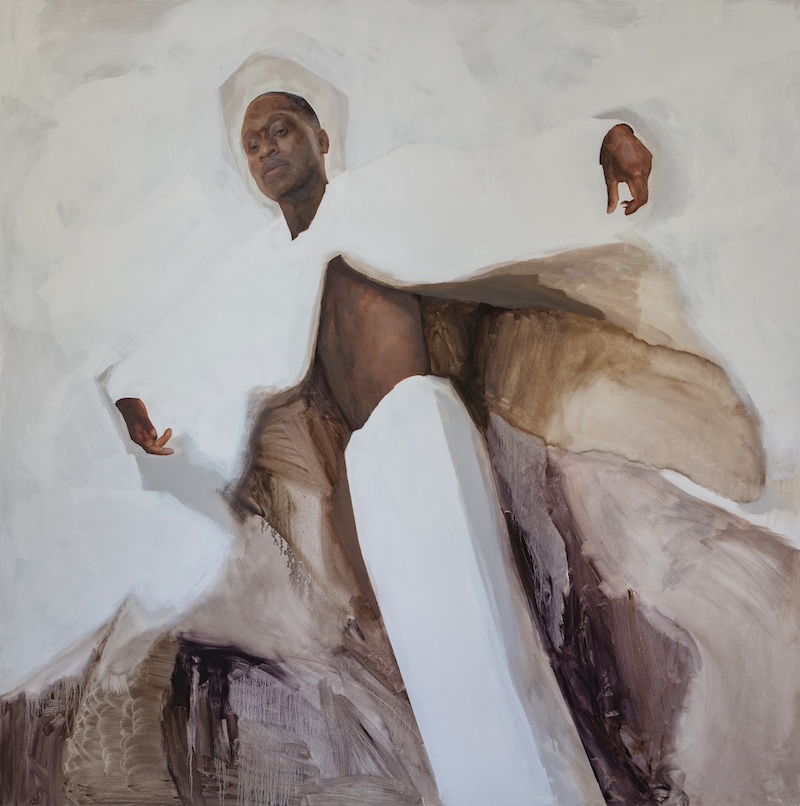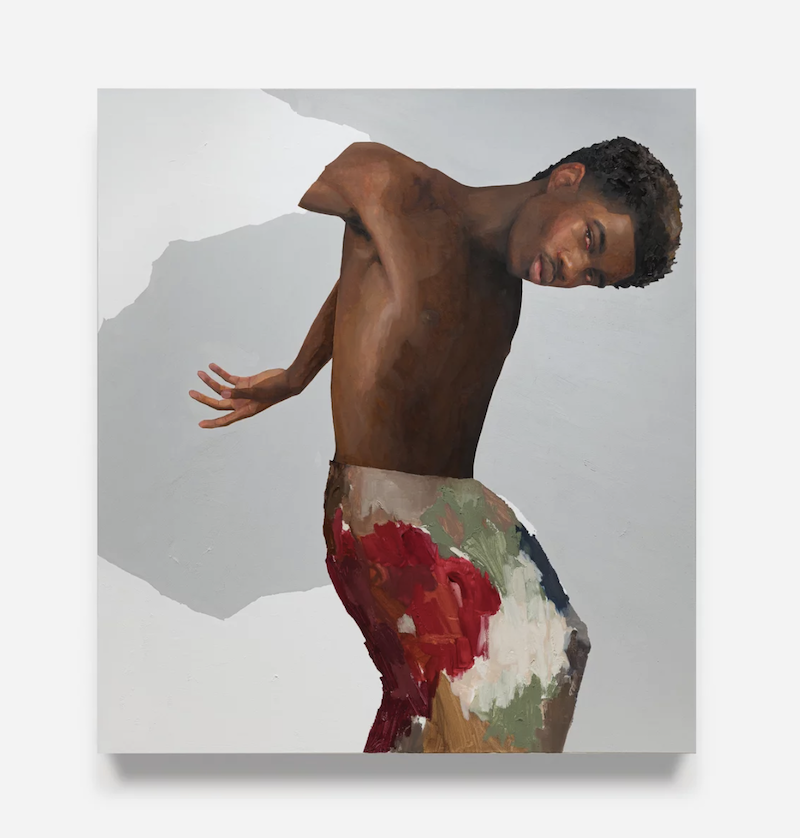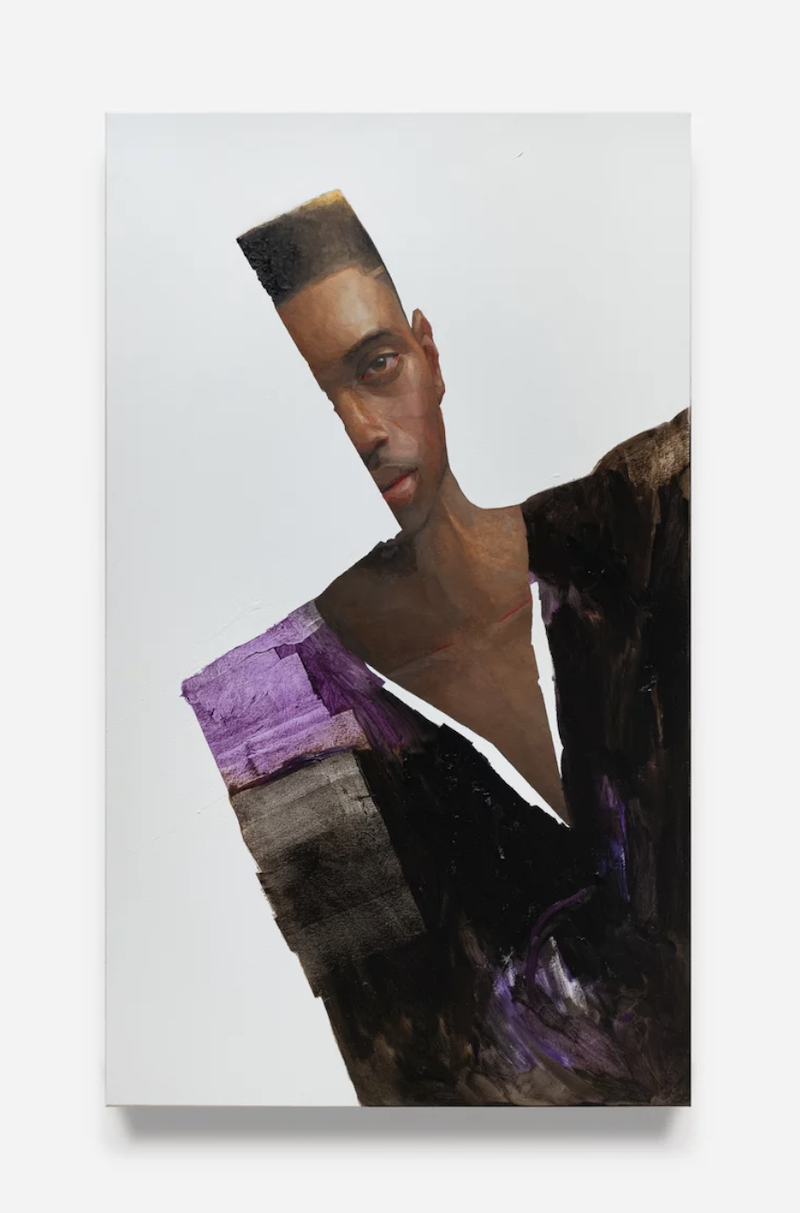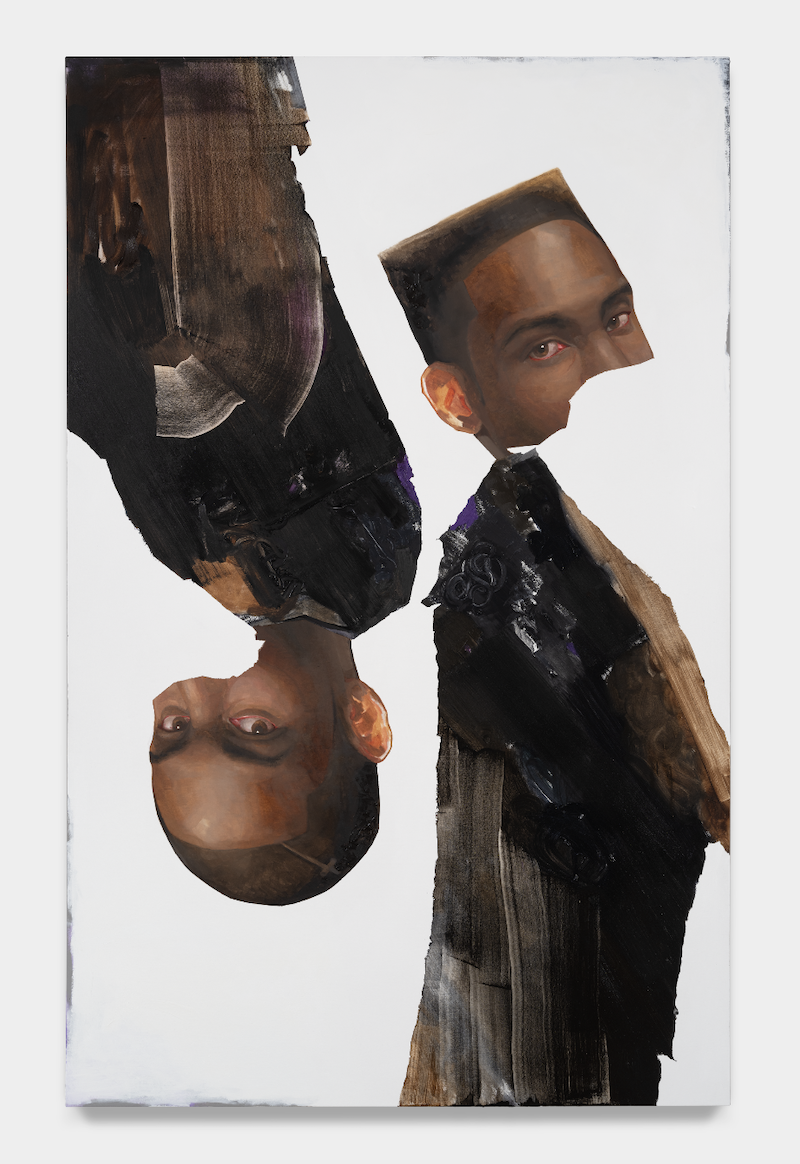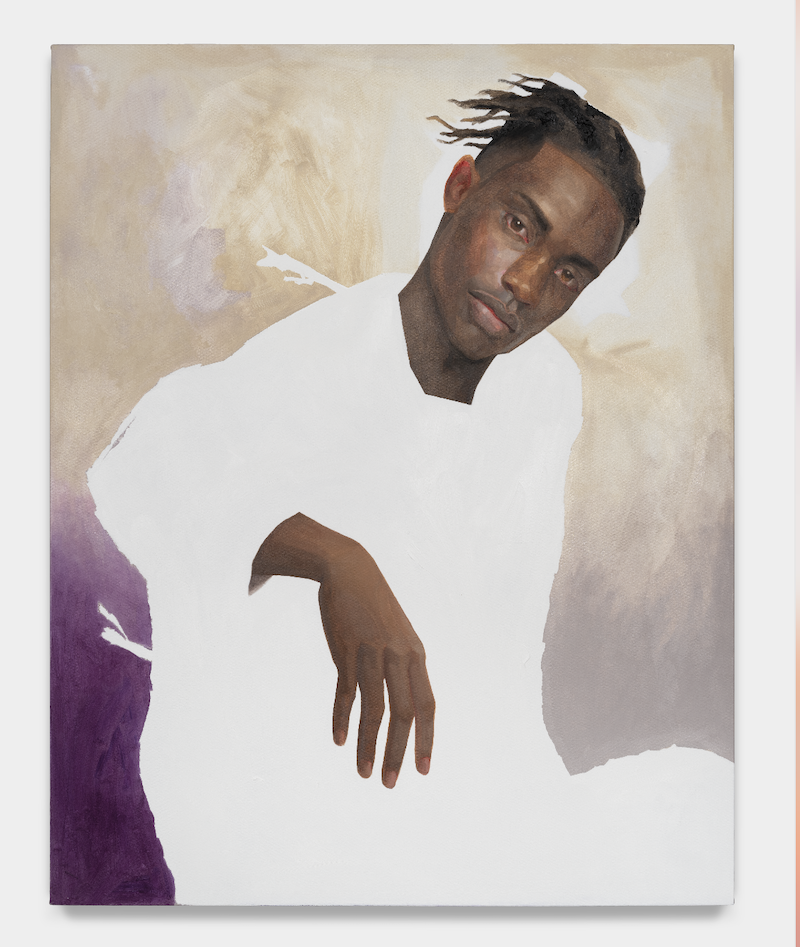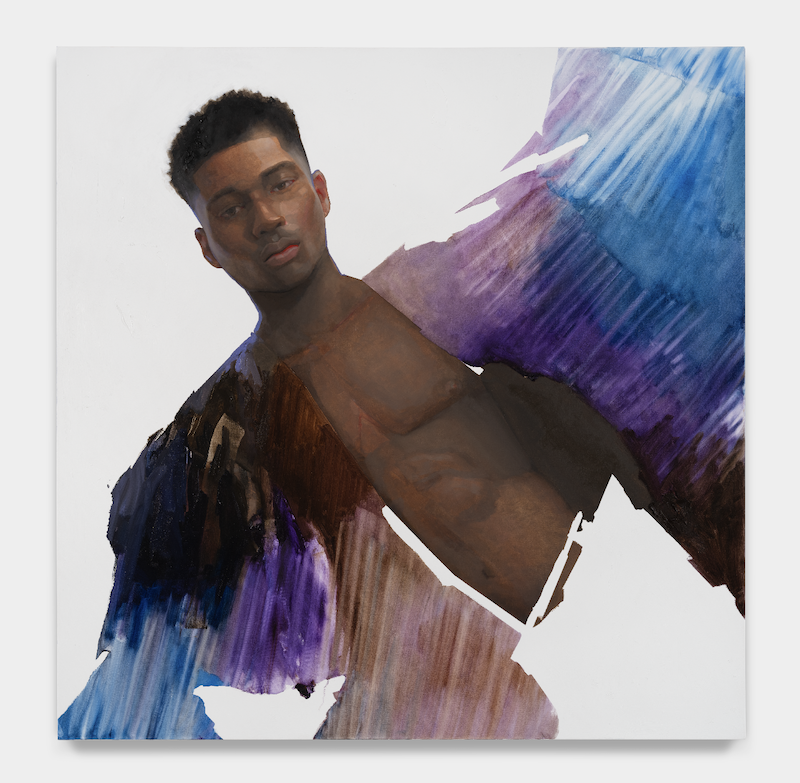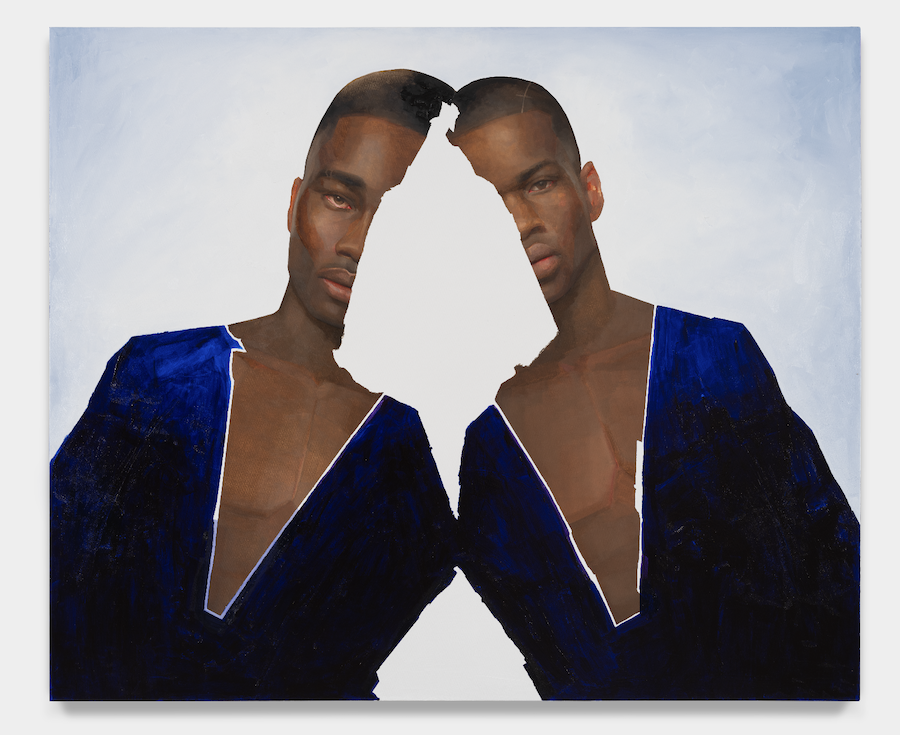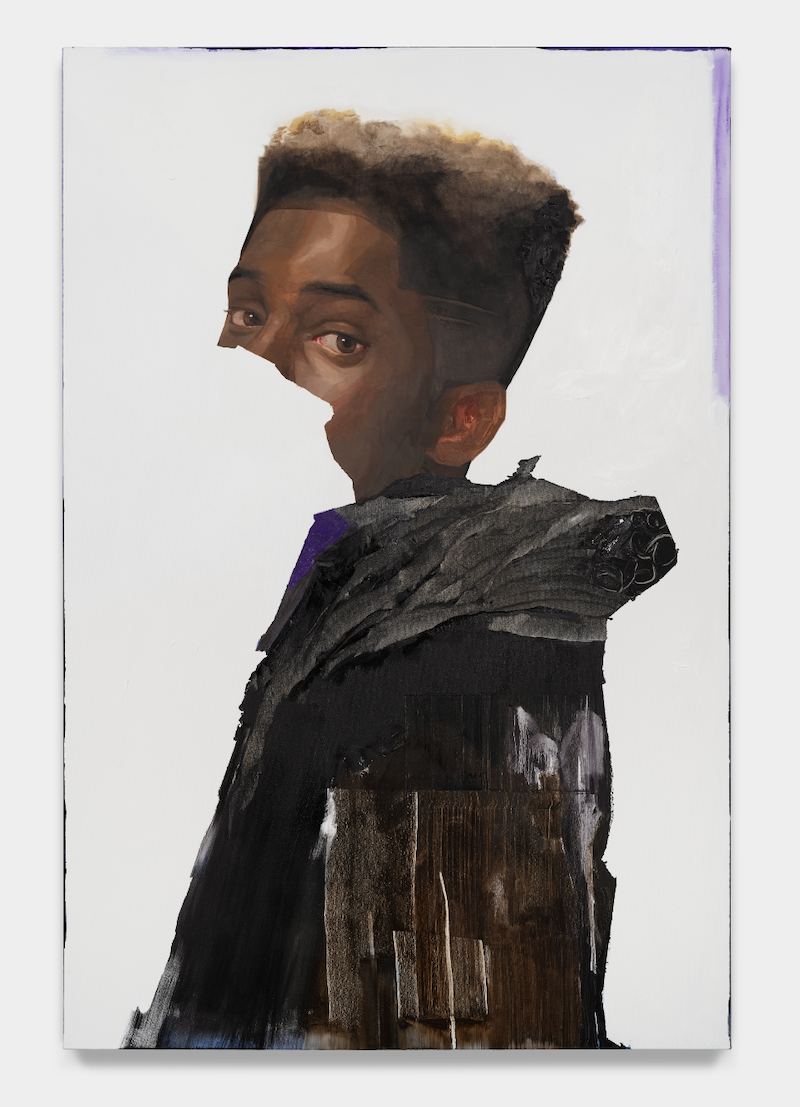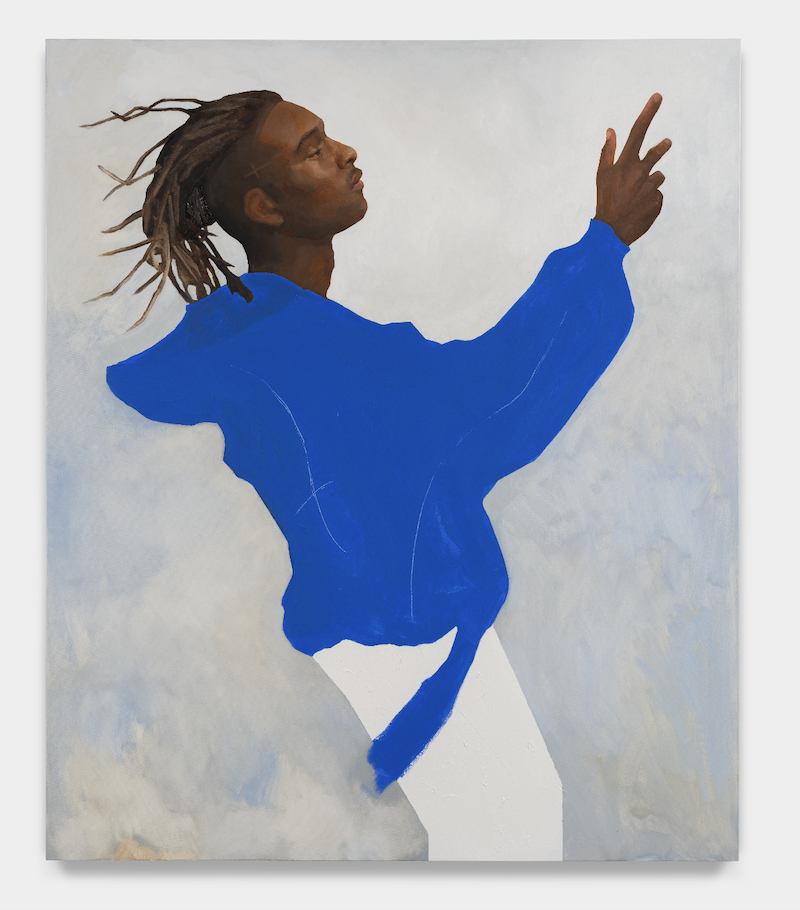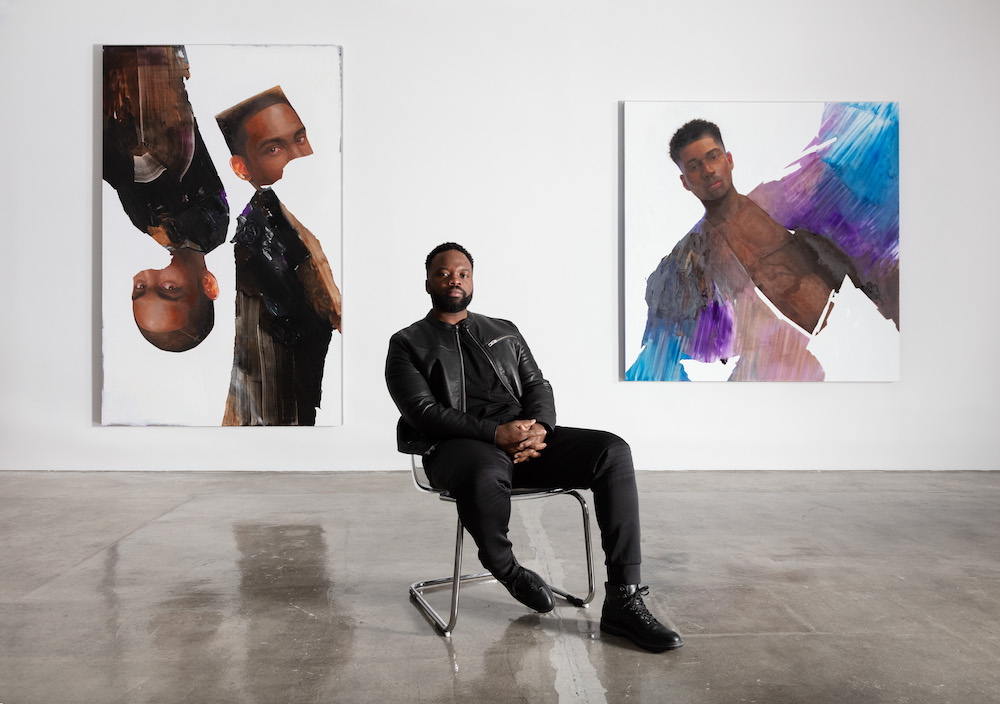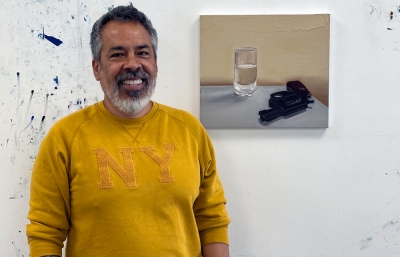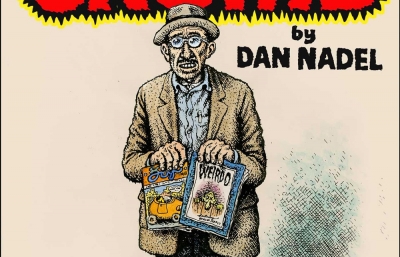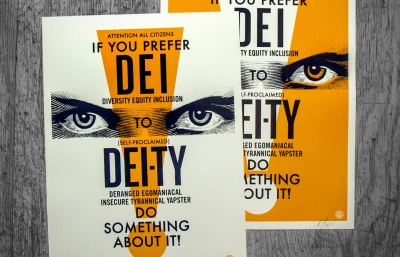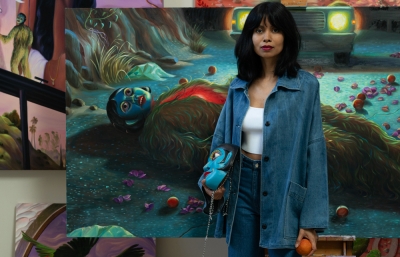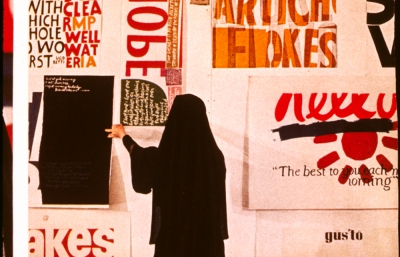In the second grade, Xavier Daniels received a letter from his art teacher. His instructor placed the paper in an envelope, instructing her student to give it to his parents. The letter, Daniels explained, suggested he should apply to a specialized art school. He was accepted and enrolled the following year. Today one might say the Atlanta-based artist has come full circle—exhibiting in gallery shows, including two solo exhibitions at the Richard Beavers Gallery in Brooklyn and Soho, respectively, as well as a show with Almine Rech in Paris in May 2022 and Shanghai in the Summer of 2023. Now an instructor himself, the Morehouse College alumnus—and former firefighter—teaches at Atlanta Technical College. He appreciates the opportunity to give back to the next generation, helping young artists realize their fullest potential, showing them the paths at their disposal, and encouraging them to overcome the stereotypes facing Black people.
The latter piece of advice is integral to Daniels’s practice today. In his exhibition Cry Like a Man at Richard Beavers in early 2023, the artist unveiled a series of 11 works depicting Black men in various states of self-expression, underscoring the importance of emotional catharsis; no matter that far too many Black men, from their earliest years, are conditioned to suppress their feelings. The artist mostly uses oil paint, leveraging portraiture and abstraction with unique palettes for each work (all colors are mixed, it’s worth noting; not even one comes straight from the tube), inspired by fellow Black male oil painter Henry Tanner, as well as Caravaggio, whose use of light and shadow made a real mark on Daniels’s own practice, he observes skin tones, Daniels sees a range of colors, applying ample purple, white, and blue to his work, colors that evoke royalty, purity, innocence, and emotional release.
Charles Moore: Could you take me back to when you were a kid? When did you first discover you had artistic talent?
Xavier Daniels: Well, I would say it was when my art teacher in second grade told me I had talent. Here I was just being myself and enjoying making art in my elementary school art class, but she recognized that I really had talent and sent a letter home. The letter explained that I should audition for a school for children with special artistic talent. I got in and from the third grade, I attended specialized art school all the way through graduate school.
And how did your parents recognize your talent?
Well, even when I was five or six my parents would purchase a lot of coloring books and crayons, and I would use up an entire coloring book in one day.
So it seems like, early on, people not only acknowledged your artistic ability but decided to foster it. Let's fast forward to high school. You didn't go directly into continuing to make art, did you?
Well, I wanted to, but I honestly didn't really know how. After high school, I earned multiple scholarships for art school, and I chose to go to the Rhode Island School of Design for my foundation studies. It was great being in Providence, Rhode Island, at that time, but being 18 years old, it was a bit of a culture shock coming from Miami, Florida. That's when I transferred to Morehouse, still majoring in art.
But Providence was where I learned more about contemporary African American artists. Previously I could say I was more of an art school student in the studio if you will. And that's when my mindset started to change. However, from graduate school onwards, there just wasn't any clear path. So where do you go? I didn't know. And that's how I ended up becoming a firefighter. My dad was a police officer, you see. I just thought being a firefighter was cool. I was living in New York City at the time of 9/11, trying to make it as an artist, and it just did not work. I went back to Atlanta because I’d just finished all my courses at Morehouse. I've been in Atlanta ever since.
So you continued art education after that?
Well, yes. I became a firefighter more out of necessity, but I was also attending graduate school. So, I was around other artists, though as a firefighter, I was the only artist in the bunch. It was more of a means to an end. But they welcomed me all the same. Eventually, after 13 years of doing that and just stabilizing my life, I bit the bullet. I said it’s all or nothing. I'm going to give my art career all my might. It was a tough decision.
What year was that?
2018 was when I stopped working for the first year and a half or so. It was super scary without a regular paycheck. But you know what? Here we are today.
So you have this vulnerable period where it's scary and—even though it was your decision and destiny, you're making a career change?
Yes. That was the only thing I felt I was good at. I really, I felt I had something that I wanted to share and things I wanted to create.
When was the moment when you felt like this was the right decision?
Well, all along I knew it was the right decision. Even during that uncertain gray period, I did feel a sense of freedom to really tap into all the things that I wanted to get into as an artist. Since there was no clear way to do it besides just making art, the process just evolved on its own.
Often artists are either inspired by their peers or they study the works of others and develop their own style from there. Who are some of the artists historically you admire and those you currently admire?
I would say historically it would be Henry Tanner. I truly love his work and I was excited to learn in the African American Art History course at Morehouse College that he was a Black male oil painter. It was such a great experience for me and really opened my eyes to know there were other Black artists before me. Going back further in history, the paintings of Caravaggio really inspired me. I enjoy looking at the work of old masters. I can appreciate their time and skills, especially given the resources they had.
Yes, Caravaggio was a master of light and darkness as well as blending colors. I feel in a certain sense you are like Caravaggio in the way you use white as a form to project light. Talk a little bit about that.
Well, I would say my reason for choosing to work from white is because of the symbolism attached to it. I feel like it’s a color worthy to associate with Black men—just virtue of its purity. That's where I choose my light source. I would also say that, when I'm painting a darker skin tone, the contrast between the dark and the white works wonders as this may not be as dramatic between dark skin tones and Black.
Speaking of your subjects being darker, let's go into how you make those subjects pop with different flesh tones and how you use different colors to exude different tonalities of black skin.
When I look at people’s skin, I see such a variety of color. Of course, it depends on so many factors. First, we can go back to Caravaggio for that light and shade effect. Lighting too plays a large part. Then there’s the garment that the subject is wearing because there's such a thing as reflective light. If you are wearing a blue shirt, for example, based on the lighting and the light source, your blue shirt is going to reflect from there and it's going to hit your skin. If I were painting your portrait, and you were wearing a blue sweater, I would have to put some blue in your skin tone—that's just the way lighting works.
So you mix the colors to create reflective skin tones?
Yes, that's just one aspect of color. But then I also use gray and yellow. If you truly look at the skin—I see this when I look at myself in the mirror—I tell myself I'm more gray on this side and more yellow over on this side, and so I tweak the portrait I’m painting a bit here and there based on what I see about myself. And because I know that about myself, I can apply that to someone else. I personally may tend towards yellow, whereas someone else may tend towards orange or, oddly enough, depending on their actual complexion, they may even be more purple. It's just in those subtleties within the color that the liveliness happens. In a sense it makes every painting unique, just adding other colors to the flesh tone.
I notice that purple has always been a major source of color for you. Why is that?
For me, purple is a regal color, and it symbolizes spirituality. Then again, I use white as a symbol of innocence and purity. That is something important for me because I want to infuse Black men with those characteristics as they are not commonly associated with us. Using these colors helps me to create my own narrative about Black men, based on what I personally know from my own life experience and from relationships with other Black men—friends, former coworkers, and firefighters. I find that we have more in common than our differences. Using those colors encapsulates our own intrinsic nature and helps to create a positive image of us. 
You’re also a teacher now. Tell me what prompted you to teach. What kind of joy do you personally get from teaching?
I would say that what prompted me to teach is simply gratitude for all of my years of being an art student. I have received a lot of education and know that I have a lot to give back to younger art students. I remember 18-year-old Xavier, the art student, and I think of how my instructors at that time played a huge part in my own career. I know my subject very well and my students are both receptive and supportive. And that’s a great way to encourage me also because I can see that my journey gives them the hope that they can do it as well.
If you were to fast forward 30 years from now, what type of legacy do you want Xavier Daniels the artist to have?
I would like to have a legacy associated with encouraging generations of Black men. It’s almost as if my work could act as a handbook on how to express yourself. Someone could look at my work and say, “Yes, I can!” If I could be remembered for that, I would be proud because I know that those that come after me may not have the same experience: they would hopefully have a better experience, perhaps, not have the same limiting thoughts or questions or live every day not feeling whole based on the social history of many Black men. If I could do that, that would be a great legacy indeed.
Daniels’ solo show at Almine Rech in Shanghai was on view through August 5, 2023 // This interview was originally published in our FALL 2023 Quarterly

